![]()
|
J
& G Meakin (Ltd) |
Location and period of operation:
|
J & G
Meakin |
Hanley |
1851 |
Earthenware
manufacturers of domestic tableware at
Hanley,
Stoke-on-Trent,
Stoke-on-Trent, England
Demise of the Meakin brand
Much of the detailed information courtesy: A Handbook of British Pottery Manufacturers 1900-2010; Michael Perry Factory Sites: Dates are approximate and may overlap. 1846 - 1850 James Meakin, China & Earthenware, Newtown Pottery, High Street, Longton 1850 - 1856 James Meakin, China & Earthenware, Cannon Street, Shelton 1853 - 1860 James & George Meakin, Earthenware Manufacturers, Market Street, Hanley 1859 - c1980 J & G Meakin, Earthenware Manufacturers, Eagle Pottery, Ivy House Road, Hanley 1888 - 1959 J & G Meakin, Earthenware Manufacturers, Eastwood Works. Lichfield Street, Hanley |
|
This fragment dates from 1853-1856 period which was when the brothers James & George Meakin were operating from works in Market Street, Hanley. It was found on the beach along Lake Michigan in Port Washington, US. Numerous pottery fragments are found from the October 1856 ship wreck of the steamship Toledo. photo courtesy: Jenny
Guetchidjian |
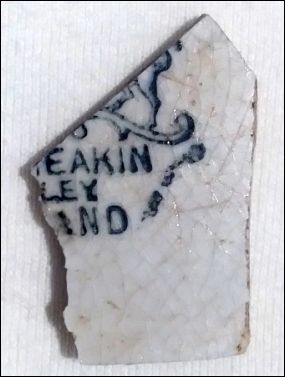
This fragment dates from 1891+ and was generally in use until the 1910s. It was found in 2024 in the ruins of an old house located in a gold and sugar cane region of Brazil photo courtesy: Renato Silva |
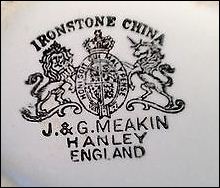 Ironstone China J & G Meakin Hanley England an example of what the full mark looked
like |
|
Typical examples of ware produced: Prior to 1945 they made predominantly inexpensive export wares, particularly for the American market. In the 19th century the firm was well-known for its white granite (undecorated ironstone) wares in imitation of contemporary French porcelain. In the 20th century the firm has been most widely recognised for the "Sol" wares produced between 1912 and 1963 for home and hotel use. Post war expansion in the home market for domestic tableware resulted in the production of a wide range of traditional and fashionable shapes and patterns. 17 shapes and over 100 patterns have been identified for the period 1945-1975. Notable designers: Post war design team of Frank Trigger, Alan Rodgers and Tom Arnold worked under the direction of I Travers-Smith (Homes Sales Manager) and they were noted for the Studio (shape 2) range 1963-late 1970s.
The entry in the 1951 & 1956 Pottery Gazette Reference Books records that the company produced...
The 1960 entry lists...
|
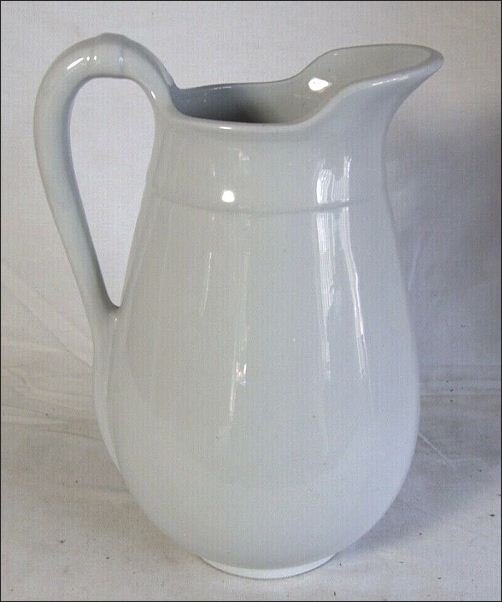 white ironstone jug |
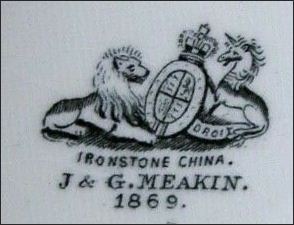 Ironstone China J & G Meakin 1869 Mark from the Eagle Pottery Works - unusually this includes the date of manufacture |
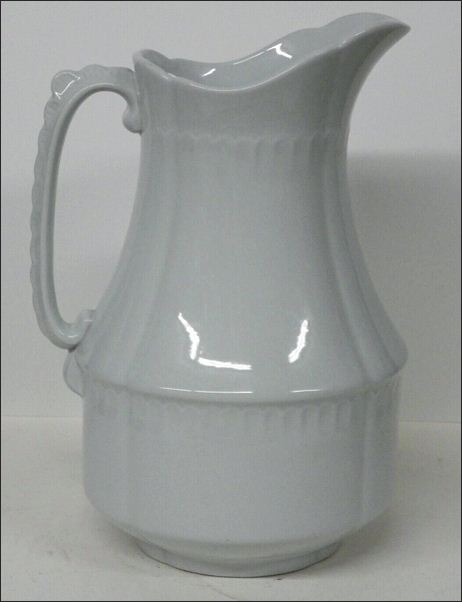 white ironstone jug |
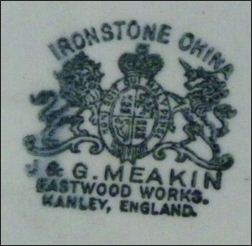 Ironstone China J & G Meakin Eastwood Works Hanley, England J&G Meakin operated the Eastwood Works from 1888. Marks with 'ENGLAND' are 1891 onwards |
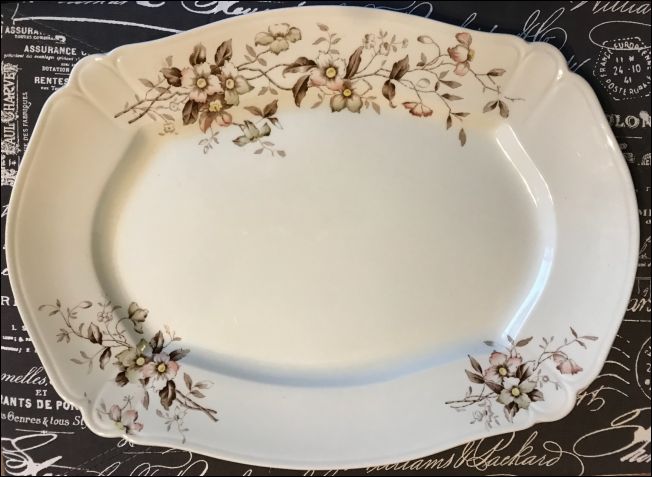 ironstone platter with a generic transfer pattern |
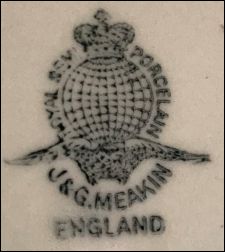 Royal Semi Porcelain J & G Meakin England c. 1891 - 1912 this mark was likely used for ware
exported to the USA - underneath the globe is a representation of
the |
photos courtesy: Janet Hartje
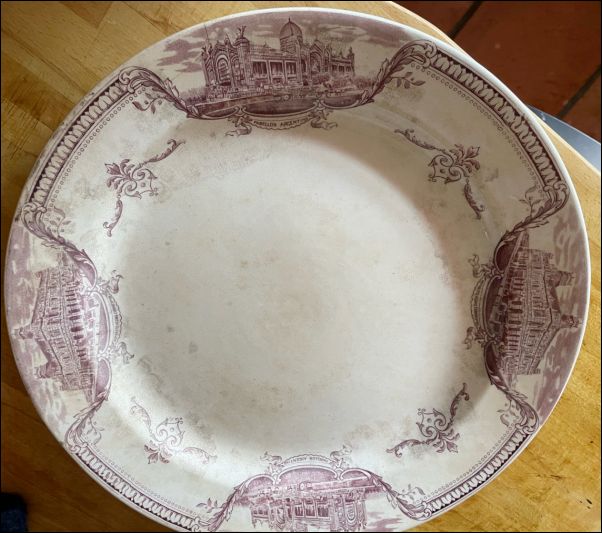 platter produced by J & G Meakin for the Argentinean pavilion at the World Fair held in Paris in 1889 |
J
& G Meakin |
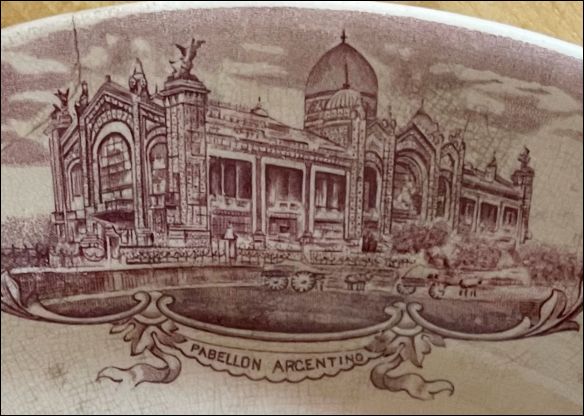 Pabellon Argentino The Argentine Pavilion was a monumental construction commissioned by the Argentine State for their site the Universal Exposition in Paris in 1889 |
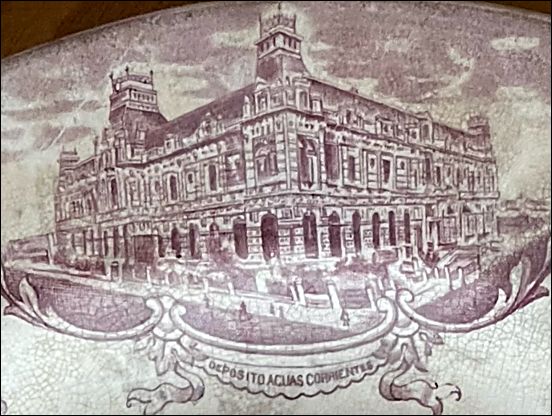 Deposito Aguas Corrientes The Palace of Running Waters (Spanish: Palacio de Aguas Corrientes) is an architecturally significant water pumping station in Buenos Aires, Argentina |
photos courtesy: Bea Bailey
J & G Meakin 1950s ware:
|
The austerity restrictions on decorated ware, put in place during the Second World War were not fully lifted until August 1952. (The Wartime Concentration Scheme) In the 1950s J & G Meakin were producing simple and bold designs and patterns including the streamlined Studio shape (1953) and Horizon shape (1955).
|
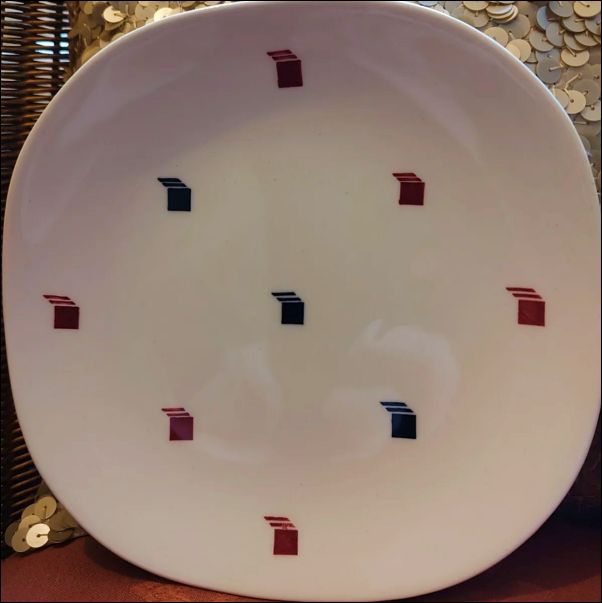 |
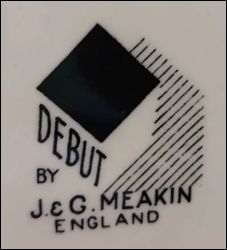 Debut by J.&G. Meakin England |
photos courtesy: Anna Shaw
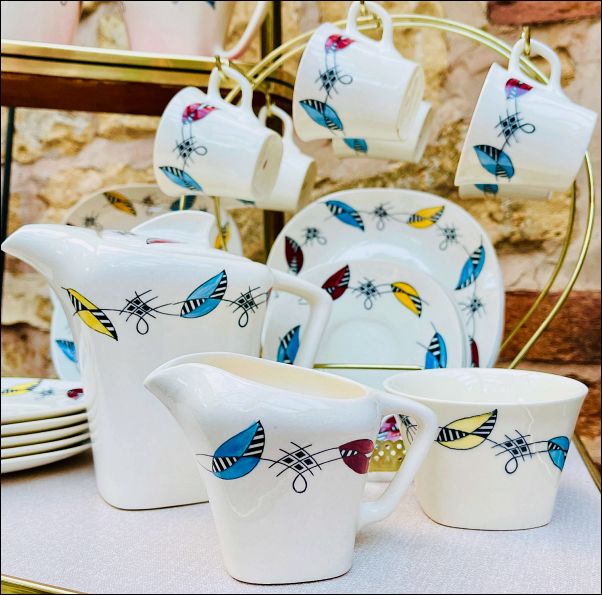 Mid 1950s Coffee Set by J&G Meakin in the Frolic Pattern on the Horizon shape |
 Frolic by J.&G. Meakin England |
photos courtesy: Clutterfingers
|
Marks used on ware for identification: Trade names listed in the 1951,56 & 1960 Pottery Gazette Reference Books are: 'Celeste' ware, 'Rosa' ware, 'Sol' ware, 'Sunflower' ware, 'Sunshine' ware, 'Vitresol' hotel ware. 1965 Traded under "Bull in a China Shop" by J&G Meakin 1980 "Bull in a China Shop" used as a brand name for Wedgwood group Creative Tableware Division inc. Johnson Brothers, J&G Meakin, Midwinter, Unicorn and Franciscan. |
J & G MEAKIN
SOL
VITRESOL
STUDIO WARE
IRONSTONE CHINA
ROYAL STAFFORDSHIRE
ENGLISH STAFFORDSHIRE
- click for further details of the numerous marks used by J & G Meakin -
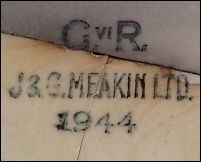
G VI R
J & G Meakin Ltd
1944
|
The mark shown indicates that the ware was produced for and supplied to the British Government; it was ultimately property of the Crown/Government, hence the GR-VI Cypher. This mark is there to distinguish the piece from being normal ‘utilitarian’ ware for public sale during the period surrounding the Second World War. J & G Meakin (and others) were given government contracts throughout the late 1930s and into the 1940s (WWII) and produced canteen ware - most likely for the armed services. The year of manufacturer is generally included. |
Questions, comments, contributions? email: Steve Birks